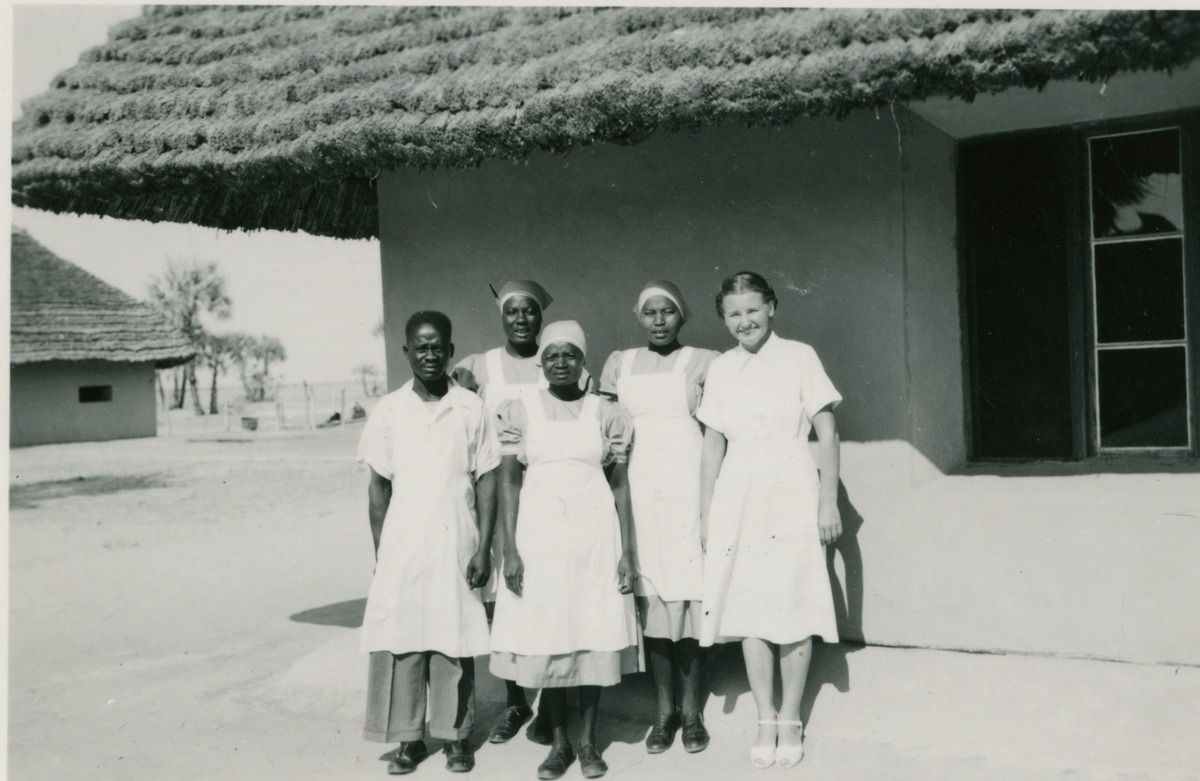New book sheds light on the history of Finland–Namibia relations in colonial world
Although Finland never had any colonies, the encounters in the Owambo region and their descriptions had various colonial features, according to the new book. The work and cultural interaction initiated by the missionaries built the basis for Finns' relationship with Africa.

Photo archive of the Finnish Evangelical Lutheran Mission, the Finnish Heritage Agency.
Leila Koivunen, the Professor of European and World History at the University of Turku, and Docent Raita Merivirta have edited the peer-reviewed collection Colonial Aspects of Finnish-Namibian Relations, 1870–1990: Cultural Change, Endurance and Resistance (Finnish Literature Society, Studia Fennica Historica 28).
The book is the result of collaboration and dialogue between researchers working in Finland, Namibia and South Africa. The book launch took place in Helsinki on Thursday, 22 August.
Geographically distant and culturally distinct, the shared history of Finland and Namibia dates back to 1870. At the time, the Finnish Mission started its operations in the Owambo region of northern Namibia.
The lives of the people living in the Owambo region changed in many ways as Christianity and European modes of education, medicine, material culture and social practices were introduced and established.
Finnish missionaries and in particular Finland's former President Martti Ahtisaari played a key role in the development leading to Namibia's independence (1990). Finns still have a special place in the hearts of many Namibians.
Owambo and Namibia have also been meaningful to Finland and Finns. Through the long-term work of the Finnish Evangelical Lutheran Mission, a wide range of written and pictorial information and artefacts flowed to Finland, forming an early basis for the local Finnish image of Africa. For a long time, Owambo was the African region best known to Finns.
New perspectives on the Finland–Namibia relationship in a colonial world
The book is a new opening into the study of the history of Finland–Namibia relations, as it approaches the subject from fresh perspectives of colonialism and anti-colonialism. The colonialism is approached through concepts such as cultural colonialism and colonialism without colonies, which have emerged in international studies in recent decades.
The book argues that although Finland never acquired colonies, the encounters and their descriptions in the Owambo region had various colonial features, according to the new book. Finland and Finns were part of a world defined by colonial power relations and perceptions.
The book deals with the major cultural changes that the Finns' activities triggered in the Owambo region. Case studies open up perspectives into many previously unexplored topics. The book explains how missionary Martti Rautanen once brought pieces of a sacred power stone to Finland which were important to the people of Owambo - and how they were repatriated to Namibia. The book also discusses, for example, the surprising relationship between missionary work and tobacco smoking in the Owambo region.
Furthermore, the book explores contemporary local efforts to preserve, revive and value the traditional culture and practices of the region - from hairpieces and metal ornaments to traditional healing. The reader will have the opportunity to explore these themes from a Namibian perspective, analysed by Namibian researchers.
The book also examines the formation and dissemination of information about Owambo and Africa in Finland. One of the chapters focuses on 12-years-old Nanguroshi who was brought to Finland from Owambo in 1875 as a foster child of a Finnish missionary family. She lived in Finland for many years, was subsequently baptised and renamed Eva Maria. The case studies also examine publications on Owambo's children directed at Finnish children and questions asked by Finnish children on the subject.
The final part of the book looks at the involvement of Finnish missionaries, diplomats and politicians in the process of Namibian independence in 1960–1980. The authors examine, for example, the views of Namibia's first president Sam Nujoma on Finnish President Martti Ahtisaari, the solidarity work conducted from Finland, and Finnish foreign policy debates on Namibia.
Appended to the book is the bibliography “Oshigwana Hashi Lesha A Bibliography of 150 Years of Writing on Namibia” (Finnish Literature Society) by Professor of English Joel Kuortti at the University of Turku and it compiles texts on the Finnish–Namibia relationship. The extensive bibliography contains around 2,000 titles and will be an important research tool both in Finland and internationally.
